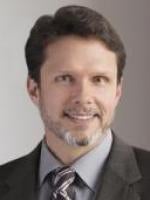In a case that could have some lasting impact, the Federal Circuit recently affirmed a 2020 ruling by Judge Rodney Gilstrap in the Eastern District of Texas dismissing claims that a competitor infringed non-literal elements of the plaintiff’s software. Because defendant World Programming Limited (“WPL”) had shown that some elements of plaintiff SAS Institute’s (“SAS”) software were not copyrightable, Judge Gilstrap found that SAS bore the burden of pointing to specific protectable elements that the jury could compare to the accused software to determine infringement. Because SAS failed to do so, Judge Gilstrap dismissed SAS’s claim.
Because the jury is charged with determining whether the defendant copied original elements of the copyrighted work, Judge Gilstrap held an evidentiary “copyrightability” hearing to “filter” out the non-original, non-copyrightable elements of the plaintiff SAS’s software. Judge Gilstrap reasoned that filtering out “ideas, facts, processes, public domain material, merger material, and scenes a faire” from the copyrighted work would permit a “comparison of the ‘golden nugget’ or ‘core’ of protectable elements” to determine whether there was infringement. On appeal, the Federal Circuit not only confirmed that using the so-called “abstraction-filtration-comparison” or “AFC” test in a case alleging non-literal software infringement was an appropriate tool but that Judge Gilstrap did not err in shifting the burden back to the copyright plaintiff once some elements of the work were found not protectable.
To understand the impact of the SAS Institute approach formulated by Judge Gilstrap, it is important to understand the difference between literal and non-literal infringement. Literal infringement of software is copying of some or all of the plaintiff’s original software code—analogous to copying an entire motion picture or a track from an album. Non-literal infringement, on the other hand, alleges that the defendant copied things like the overall structure, organization, sequence of commands, user interface, functionality, or other creative elements—similar to copying the plot of a novel. Of course, the problem with much business software is that many of the constituent elements, such as the underlying ideas, formulas, and facts are not protectable expression. Software may also incorporate open-source components or code that is otherwise part of the public domain. Tables, graphs, and other software outputs may also be subject to the copyright merger doctrine, i.e., where an idea or concept can only be expressed in a limited number of ways, the expression is not protected since it is “merged” with the unprotectable idea.
Because a copyright registration is prima facie evidence of copyrightability, Judge Gilstrap required defendant WPL to prove that there were some unprotectable elements in the software. Once WPL had identified several unprotectable elements, Judge Gilstrap shifted the burden back to plaintiff SAS to show what elements were, in fact, protectable expression. WPL had pointed to numerous aspects of the software that were not protectable, such as the programming language, public domain and open-source components, factual elements, mathematical and statistical formulae, and conventional display elements, such tables, graphs, plots, fonts, colors and lines, among others. SAS, however, simply argued that the remainder of the software was plainly a creative endeavor but, importantly, did not provide evidence to establish what about the software was creative expression. Thus, even though the defendant had admitted trying to “clone” plaintiff’s software, Judge Gilstrap dismissed SAS’s claims with prejudice.
On appeal to the Federal Circuit, SAS argued that it had made a prima facie case of copyrightability that WPL had not overcome by pointing to some unprotectable elements. Thus, the “district court should have treated as protectable everything that WPL did not show was protectable.” SAS further argued that the record was clear that there were “many options available to it” when it created the software, such that Judge Gilstrap should have found it to be protected as a whole.
Although SAS pointed to excerpts in the record purportedly showing these copyrightable elements, the Federal Circuit agreed with Judge Gilstrap that SAS had “failed to rebut WPL’s assertion and did not otherwise provide evidence in relation to the ‘filtration’ step under the three-part test.” Ultimately, the court held that where the district court had “persuasive evidence that the asserted elements are copyright unprotectable,” the plaintiff is “obligated to identify with specificity the elements of the [computer] program that it asserts as copied and to establish that those elements fall within the scope of protection extended to such elements under copyright law.”
The approach adopted by Judge Gilstrap and the Federal Circuit in SAS Institute could represent a significant change in the way plaintiffs litigate cases—at least in the Eastern District of Texas. In virtually any non-literal software infringement case, there are likely to be numerous unprotectable elements incorporated in the software—everything from output formats to font choices. Whether a defendant pointing to some of them would be sufficient to shift the burden to the plaintiff to show which protectable elements were copied remains unclear. A plaintiff, however, would be wise to construct early in the litigation an approach to filtering the copyrightable elements that compare to the defendant’s product—and have an expert who can back it up with admissible testimony.
From our read, SAS’s claims failed largely because it had not created an affirmative, evidence-based argument that its selection and organization of software elements, formatting, and other creative choices supported copyrightability. SAS probably could have gotten to an Eastern District of Texas jury had it not simply claimed blanket protection for its software as a creative undertaking rather than providing the district court a rigorous review of the creative.
Whether the rationale underlying the SAS Institute opinion finds support outside the Eastern District of Texas remains unclear. Here, the Federal Circuit only had jurisdiction to hear this appeal under 28 U.S.C. §1295(a)(1) because the complaint had included some claims for patent infringement. It remains to be seen whether other district courts or federal circuits follow Judge Gilstrap’s approach.




 />i
/>i
